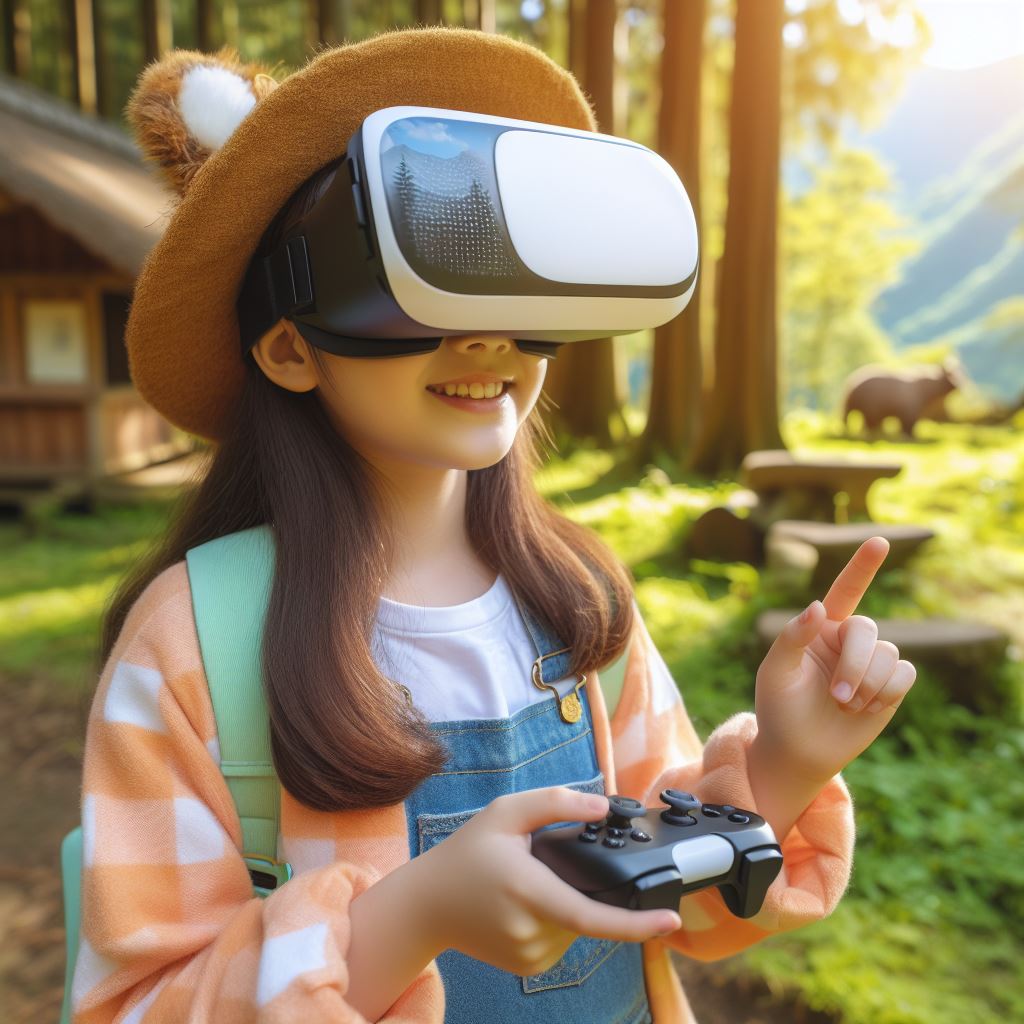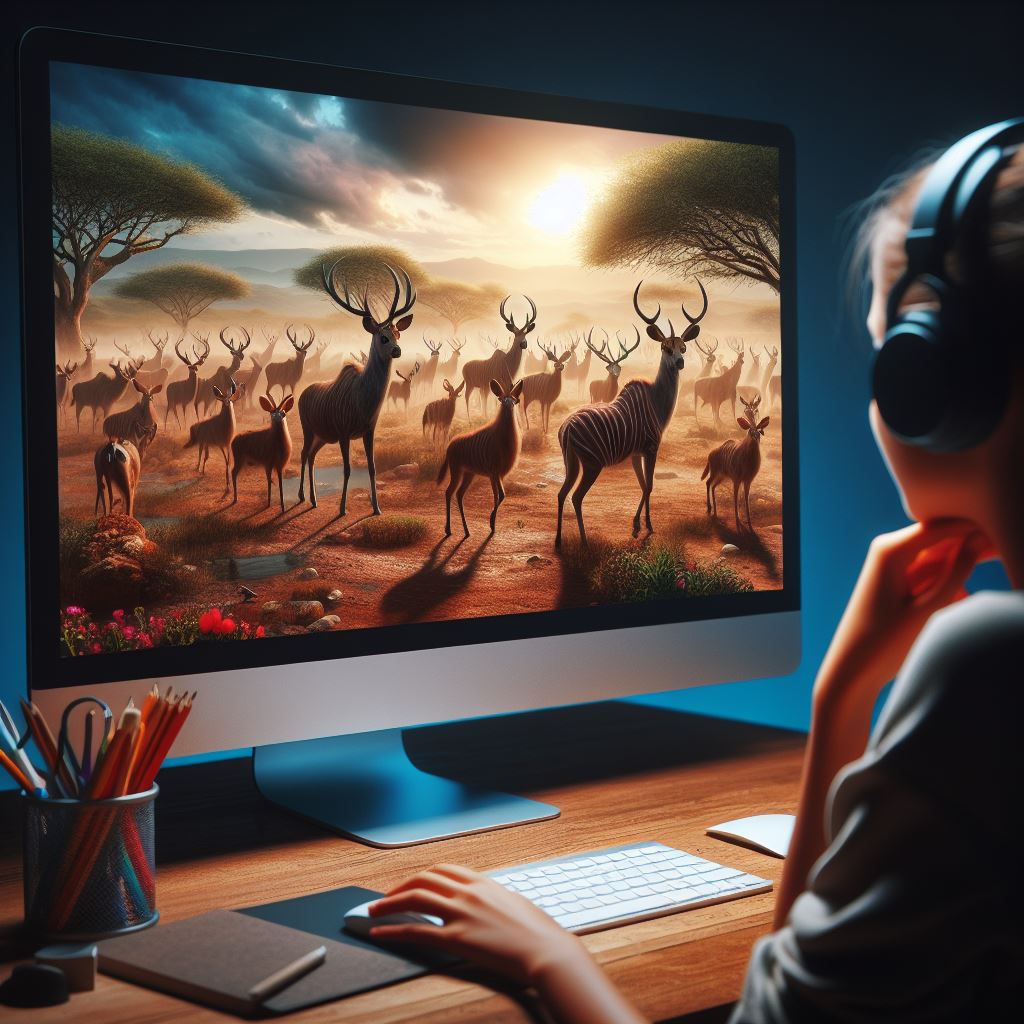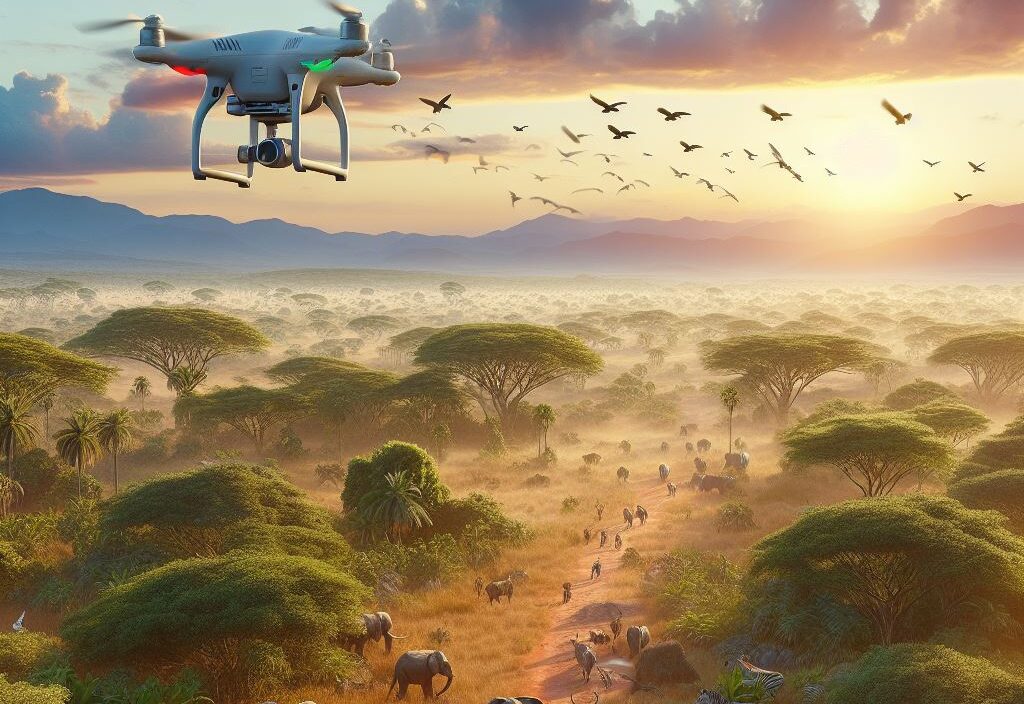AI's Role in Wildlife Preservation
Introduction
In the face of unprecedented environmental challenges, technology, particularly Artificial Intelligence (AI), has become an essential tool for conserving Earth’s diverse ecosystems. AI is emerging as a powerful tool that offers innovative solutions to monitor, analyze, and protect endangered species and their habitats. This blog post explores the multifaceted role that AI plays in wildlife preservation, shedding light on its applications, benefits, and potential impact on the future of conservation efforts.
The Current State of Wildlife Conservation
Wildlife conservation has a lot on its plate in the 21st century. Climate change, habitat destruction, poaching, and human encroachment have all led to a rapid decline in global biodiversity. Traditional conservation methods are important, but they often can’t keep up with the scale and complexity of these issues. Enter AI, a technology that opens up new possibilities for enhancing and revolutionizing wildlife preservation efforts.
AI Applications in Wildlife Preservation
Monitoring and Surveillance
AI-powered surveillance systems are essential for monitoring wildlife populations and protecting them from illegal activities. Drones equipped with AI algorithms can cover large areas, providing real-time data on animal movements, habitat changes, and potential threats. This technology allows conservationists to respond quickly to poaching incidents and other emergencies, greatly increasing the chances of protecting endangered species.
For example, in 2019, a team of conservationists used drones equipped with AI algorithms to track the movements of endangered rhinos in South Africa. The data collected by the drones helped the conservationists to identify areas where the rhinos were most vulnerable to poaching. This information allowed the conservationists to deploy rangers in these areas and deter poachers from harming the rhinos.
AI-powered surveillance systems can also be used to monitor habitat changes. For example, in 2020, a team of researchers used drones equipped with AI algorithms to track the deforestation of the Amazon rainforest. The data collected by the drones helped the researchers to identify areas where the rainforest was being cleared at an alarming rate. This information allowed the researchers to lobby governments and businesses to take action to protect the rainforest.
AI-powered surveillance systems are a valuable tool for conservationists. They can help to protect endangered species from poaching and habitat loss. This technology is essential for ensuring the survival of wildlife in the 21st century.
Data Analysis and Predictive Modeling
- Wildlife monitoring devices produce a lot of data that can be hard for humans to process.
- AI is really good at processing and analyzing large datasets, finding patterns, and making predictions.
- Machine learning algorithms can be used to:
- Assess the impact of climate change on ecosystems.
- Help scientists predict how animal behavior and migration patterns will change.
- This proactive approach allows for the development of targeted conservation strategies to reduce the impact of environmental changes.
Smart Collars and Tags
AI-powered tracking devices have revolutionized the way we track individual animals. These devices use GPS and sensor data to monitor an animal’s movements, feeding habits, and health parameters. AI algorithms can then interpret this data, providing valuable insights into the animal’s well-being and helping researchers make informed decisions about conservation strategies.
For example, one study used AI-powered tracking devices to track the movements of endangered snow leopards in the Himalayas. The study found that the snow leopards were spending more time in areas that were being encroached upon by humans, which could be a threat to their survival. This information could be used to develop conservation strategies that protect snow leopard habitat and reduce human-wildlife conflict.
Tracker & Health Monitoring for Dogs
Tractive GPS Tracker & Health Monitoring for Cats
Another study used AI-powered tracking devices to track the feeding habits of endangered humpback whales in the North Atlantic. The study found that the whales were feeding in areas that were being impacted by climate change, such as areas with warmer waters and less sea ice. This information could be used to develop conservation strategies that protect humpback whale habitat and help them adapt to climate change.
AI-powered tracking devices are a valuable tool for conservationists. They can provide valuable insights into the lives of animals and help researchers make informed decisions about conservation strategies. As AI technology continues to develop, we can expect to see even more innovative and effective ways to use AI-powered tracking devices to help protect wildlife.
Automated Wildlife Identification
Manually identifying species in camera trap images and videos can be a real pain. AI-powered image recognition technology can quickly classify and identify different species, allowing researchers to quickly process large amounts of data. This not only speeds up wildlife research but also leads to more accurate population estimates.
Public Awareness and Education
AI also plays a big part in raising awareness and educating the public about wildlife conservation. Social media platforms use AI algorithms to spread information about wildlife conservation efforts, which helps create a sense of responsibility and urgency among the global community.
Virtual reality (VR) and augmented reality (AR) apps powered by AI allow people to experience wildlife and conservation efforts firsthand, which creates a deeper connection to nature. For example, the National Geographic Society has created a VR experience called “Gorilla Trek,” which allows users to walk through a virtual forest and see gorillas in their natural habitat. The experience has been used in schools and museums to teach people about gorillas and the importance of conservation.

Behavioral Insights for Conservation Planning
AI can also be used to understand animal behavior in more complex ways. For example, AI can be used to analyze video footage of animals to track their movements and interactions, which can provide insights into their social structure and communication patterns. This information can be used to develop more effective conservation strategies that protect animal populations and their habitats.
In addition to tracking devices, AI can also be used to analyze other types of data, such as habitat data and climate data. This information can be used to model how animals are likely to respond to changes in their environment, which can help conservationists develop strategies to mitigate the effects of climate change and other threats.
Benefits of AI in Wildlife Preservation
Efficiency and Accuracy
Artificial intelligence (AI) technology is making wildlife monitoring and conservation efforts more efficient and accurate. Automated systems can process large amounts of data quickly and efficiently, allowing conservationists to respond to threats more quickly. Additionally, AI algorithms can learn over time, becoming more precise and reliable.
One example of how AI is being used to improve wildlife conservation is in the tracking of endangered species. In the past, tracking endangered species was a labor-intensive and time-consuming process. However, AI-powered tracking systems can now automate much of this process, allowing conservationists to focus on other tasks.
Another example of how AI is being used to improve wildlife conservation is in the detection of poaching. Poaching is a major threat to wildlife populations, and it can be difficult to detect and stop. However, AI-powered systems can be used to monitor remote areas for signs of poaching, such as traps or illegal hunting activities. This information can then be used to deploy rangers to stop poachers and protect wildlife.
Cost-Effectiveness
While AI technologies can be expensive to implement at first, the long-term benefits often outweigh the costs. AI-powered systems can operate autonomously, which reduces the need for a lot of human labor. This not only saves money on operations but also allows conservation organizations to allocate their resources more effectively.
Global Reach
AI can be used to monitor wildlife in hard-to-reach or dangerous areas. Drones with AI can cover large and remote habitats, collecting important data without putting human lives at risk. This global reach is essential for monitoring and protecting species in their natural environments, even in areas where humans can’t access them.
Adaptability to Changing Conditions
Wildlife conservation is a constantly changing field, as ecosystems and species are constantly adapting to new conditions. Artificial intelligence is an ideal tool for addressing the evolving challenges of conservation, as it can adapt and learn from new data. As environmental conditions shift, AI algorithms can quickly adjust, ensuring that conservation strategies remain effective.
Enhanced Conservation Planning
AI helps with more than just monitoring and data analysis. It also plays a big role in conservation planning. Advanced algorithms can evaluate the interconnectedness of species in an ecosystem, which can help conservationists create more holistic strategies that address the complex web of relationships within a given habitat.
Predictive Conservation
Artificial intelligence (AI) can be used to predict potential threats to wildlife, such as the spread of diseases or invasive species. This foresight can help conservationists take proactive measures to minimize the risk of emerging challenges and preserve ecosystem balance.
For example, AI can be used to track where animals are moving and identify areas where they’re at risk of coming into contact with diseases or invasive species. This information can then be used to create targeted conservation plans, like setting up quarantine zones or educating local communities.

AI can also be used to monitor environmental conditions, like changes in temperature or precipitation, that can impact wildlife populations. This information can be used to predict future threats and develop strategies to mitigate their impact.
By using AI to predict potential threats to wildlife, conservationists can take proactive steps to protect these species and preserve the ecosystems that they depend on.
Genomic Conservation
In recent years, AI has been used in genomic studies for wildlife conservation. By analyzing the genetic diversity of endangered species, AI can help researchers understand population dynamics and develop strategies to maintain healthy gene pools. This genomic approach is essential for ensuring the long-term viability of species.
FAQs about AI’s Role in Wildlife Preservation
Q1: How does AI contribute to the fight against poaching?
A1:AI is a powerful tool that can be used to combat poaching. One way that AI is being used is through the use of surveillance drones. These drones are equipped with advanced algorithms that allow them to detect and track poachers in real-time. This information can then be used by authorities to respond quickly and protect endangered species.
Q2: Can AI help in assessing the impact of climate change on wildlife?
A2: AI can play a vital part in figuring out how climate change affects wildlife. Machine learning algorithms study environmental data, like temperature and habitat changes, to predict how these things might influence animal behavior and migration patterns.
Q3: Are AI-powered tracking devices safe for animals?
A3: AI-powered tracking devices, like smart collars and tags, are made with the animals’ well-being in mind. These devices are lightweight and non-intrusive, and they often have sensors that monitor the animal’s health. They provide valuable data without harming the animals being tracked.
Q4: How affordable is the implementation of AI in wildlife conservation?
A4: While AI technologies can be costly to implement at first, the long-term benefits, such as increased efficiency and reduced operational costs, make it a cost-effective solution for wildlife conservation organizations.
Q5: How does AI contribute to public awareness in wildlife conservation?
A5: AI uses social media algorithms to share information and educational content about wildlife conservation. VR and AR apps powered by AI offer immersive experiences that help people connect with nature.
Q6: How does AI aid in conservation planning?
A6: AI helps conservationists by analyzing data on animal behavior, habitat interactions, and species interconnectivity. This information helps them design more effective and holistic strategies for preserving ecosystems and biodiversity.
Q7: Can AI predict future threats to wildlife?
A7: Yes, AI can also be used to predict potential threats to wildlife, such as the spread of diseases or invasive species. This foresight can help conservationists implement proactive measures to minimize risks to ecosystem health.
Conclusion
Artificial Intelligence is having a major impact on wildlife conservation. From combating poaching to monitoring ecosystems, AI is making a significant difference. As technology evolves, we can expect to see even more creative ways to use AI for conservation. By collaborating, we can create a more sustainable future for both wildlife and humans.


